Microbial Symbiosis
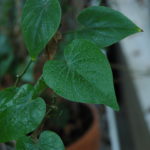 Our research has examined the ecological and evolutionary consequences of microbial
Our research has examined the ecological and evolutionary consequences of microbial  symbiosis with higher plants and animals. We have investigated the role of hereditary symbiosis where microbial symbionts are vertically transmitted from mother to offspring through seeds or eggs. Theory suggests that these types of interactions must be mutualistic given they will not persist if infected hosts suffer reduced fitness compared to non-symbiotic individuals. Enhanced host defense appears to be a common mechanism of mutualism in these interactions. For example, grasses infected by vertically-transmitted fungal endophytes are more vigorous and are
symbiosis with higher plants and animals. We have investigated the role of hereditary symbiosis where microbial symbionts are vertically transmitted from mother to offspring through seeds or eggs. Theory suggests that these types of interactions must be mutualistic given they will not persist if infected hosts suffer reduced fitness compared to non-symbiotic individuals. Enhanced host defense appears to be a common mechanism of mutualism in these interactions. For example, grasses infected by vertically-transmitted fungal endophytes are more vigorous and are 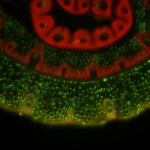 better defended against herbivory than non-symbiotic individuals through the production of toxic alkaloid compounds by the endophyte. Analogous interactions occur in morning glories where many species are highly infected by symbiotic fungi and contain high concentrations of fungal alkaloids. Students have also investigated the diversity and functions of non-hereditary fungal endophytes that comprise the primary microbiome of most plants.
better defended against herbivory than non-symbiotic individuals through the production of toxic alkaloid compounds by the endophyte. Analogous interactions occur in morning glories where many species are highly infected by symbiotic fungi and contain high concentrations of fungal alkaloids. Students have also investigated the diversity and functions of non-hereditary fungal endophytes that comprise the primary microbiome of most plants.
Infectious Disease and Host Ecology
“Where too many plants of one species are 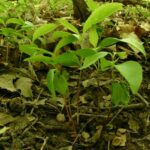 grown together, they are very apt to be attacked by some pest, insect or fungus… when plants are too close together, disease can spread from one to the other, and become fatal to all. Where plants of one kind are separated by those of other kinds, the pest, even if present, cannot spread…” – H. N. Ridley, 1930
grown together, they are very apt to be attacked by some pest, insect or fungus… when plants are too close together, disease can spread from one to the other, and become fatal to all. Where plants of one kind are separated by those of other kinds, the pest, even if present, cannot spread…” – H. N. Ridley, 1930
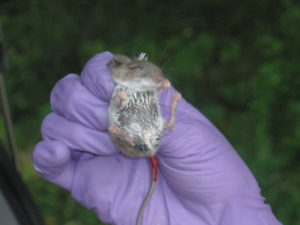
Disease and symbiosis represents two points along a continuum of interspecific interactions. We have had a longstanding interest in how interactions with pathogens affect host dynamics in ecological communities. We have investigated how pathogens affect host plant physiology, life history and population dynamics. Prior research has also examined how soil-borne pathogens affect spatial patterns of tree seedling recruitment and adult distribution in temperate forest communities through the process of conspecific negative density dependence (i.e., the Janzen-Connell hypothesis).
Microbial Interactions and Biological Invasions

We are interested in the ecological consequences of biological invasions and how microbial interactions, both symbiotic and pathogenic, differ in the native vs. introduced ranges of hosts. For example, previous research results on damping-off pathogens of black cherry (Prunus serotina) in its native American range stand in contrast to the situation in Europe where non-native black cherry has become highly invasive, supporting the enemy release hypothesis.
However, disease emergence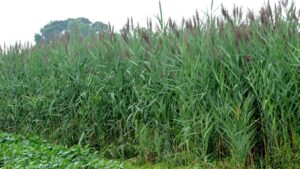 can occur and build up over time when new species invade ecological communities, with consequences for the success and persistence of invaders. Ongoing research with colleagues at the University of Florida is examining invasive stiltgrass (Microstegium vimineum) populations in eastern US forest communities and how their dynamics and ecological impacts are mediated by the accumulation of Bipolaris fungal pathogens. The same pathogen has spilled over to commercial cannabis where both species co-occur. Recent genomic research on invasive Phragmites in the Great Lakes region also suggests an important role of upregulation of defense responses compared to noninvasive, native populations. Understanding how biological invasions are mediated by microbial interactions may reveal new approaches for successful control.
can occur and build up over time when new species invade ecological communities, with consequences for the success and persistence of invaders. Ongoing research with colleagues at the University of Florida is examining invasive stiltgrass (Microstegium vimineum) populations in eastern US forest communities and how their dynamics and ecological impacts are mediated by the accumulation of Bipolaris fungal pathogens. The same pathogen has spilled over to commercial cannabis where both species co-occur. Recent genomic research on invasive Phragmites in the Great Lakes region also suggests an important role of upregulation of defense responses compared to noninvasive, native populations. Understanding how biological invasions are mediated by microbial interactions may reveal new approaches for successful control.
Other Research
Brood X Files
The emergence of 17-year periodical cicadas is one of the most unusual biologi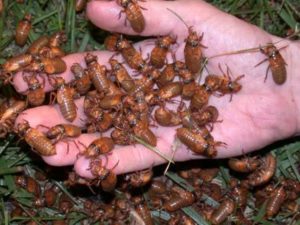 cal
cal 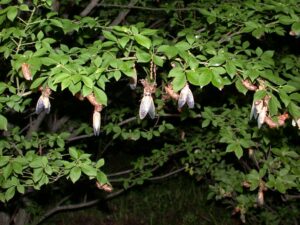 phenomena on Earth, and occurs in almost entirely within the eastern United States and nowhere else. Brood X is one of the largest, if not the largest, cicada broods where millions of cicadas per square mile will emerge after 16 years and 11 months below ground. They will proceed to sing, mate, lay eggs and die. 17 years later the next generation will emerge and begin the cycle again. At Indiana University I conducted NSF-supported research on Brood X periodical cicadas from 2001-2007 (they emerged in 2004) to investigate their potential effect on forest ecosystems and to produce a documentary on their biology for public audiences. That video documentary is linked here. Most recently, in spring of 2021, I headed back to southern Indiana to relive the amazing events of 2004 and to lend my scientific expertise on periodical cicadas to Netflix for their documentary filming of Brood X. The cicadas will be back in 2038!
phenomena on Earth, and occurs in almost entirely within the eastern United States and nowhere else. Brood X is one of the largest, if not the largest, cicada broods where millions of cicadas per square mile will emerge after 16 years and 11 months below ground. They will proceed to sing, mate, lay eggs and die. 17 years later the next generation will emerge and begin the cycle again. At Indiana University I conducted NSF-supported research on Brood X periodical cicadas from 2001-2007 (they emerged in 2004) to investigate their potential effect on forest ecosystems and to produce a documentary on their biology for public audiences. That video documentary is linked here. Most recently, in spring of 2021, I headed back to southern Indiana to relive the amazing events of 2004 and to lend my scientific expertise on periodical cicadas to Netflix for their documentary filming of Brood X. The cicadas will be back in 2038!
Glass Sand and Coastal Vegetation
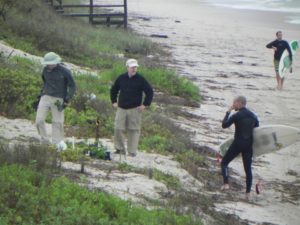
The ReCoast team at Tulane and regional collaborators (https://recycleforthecoast.org/) is exploring whether recycled glass sand (from ground up glass bottles) can be used for coastal restoration in southern Louisiana, which is losing land at an unprecedented rate. The ability of recycled glass sand to support life of plant species adapted to growing on sandy beaches and dunes is being explored is greenhouse and field experiments using beach morning glories and sea oats with the support of the NSF Convergence program. How these adapted plant species grow on glass sand substrate compared to natural beach sand will help determine how and where glass sand can be used for coastal restoration.
Ticks and Blood-Sucking Parasites
Distinct from plant systems, we have also investigated the diversity and function of vertically-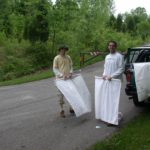 transmitted bacterial
transmitted bacterial 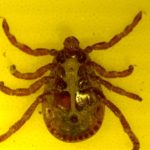 endosymbionts in ticks, which are closely related to human pathogens and that significantly affect tick physiology. For example, ticks require bacterial endosymbionts that synthesize B vitamins necessary for metabolizing blood as a sole food source. The potential for tick endosymbionts to interact or interfere with pathogens has implications for human disease risk. Ticks are the major source of vector-borne human disease in the U.S. where Lyme Disease is by far the most common vector-borne disease.
endosymbionts in ticks, which are closely related to human pathogens and that significantly affect tick physiology. For example, ticks require bacterial endosymbionts that synthesize B vitamins necessary for metabolizing blood as a sole food source. The potential for tick endosymbionts to interact or interfere with pathogens has implications for human disease risk. Ticks are the major source of vector-borne human disease in the U.S. where Lyme Disease is by far the most common vector-borne disease.